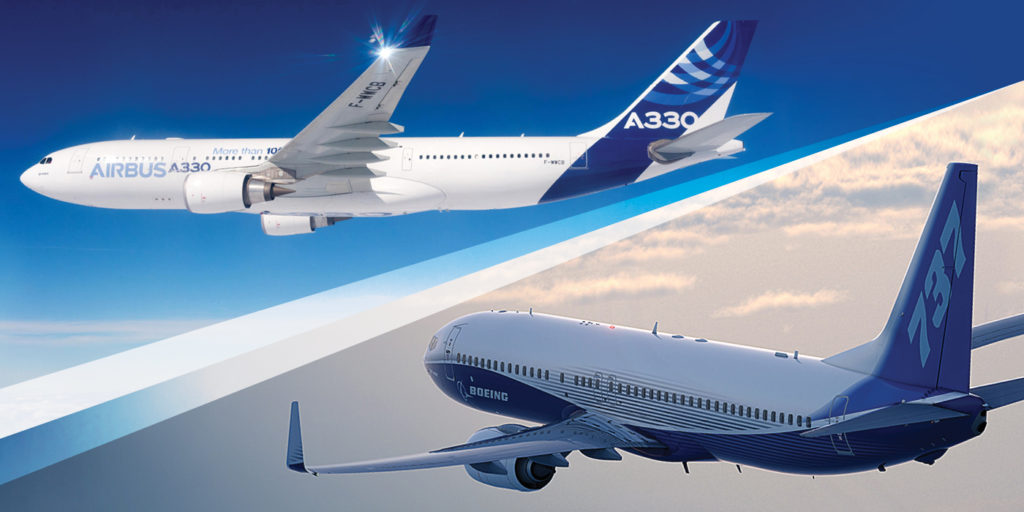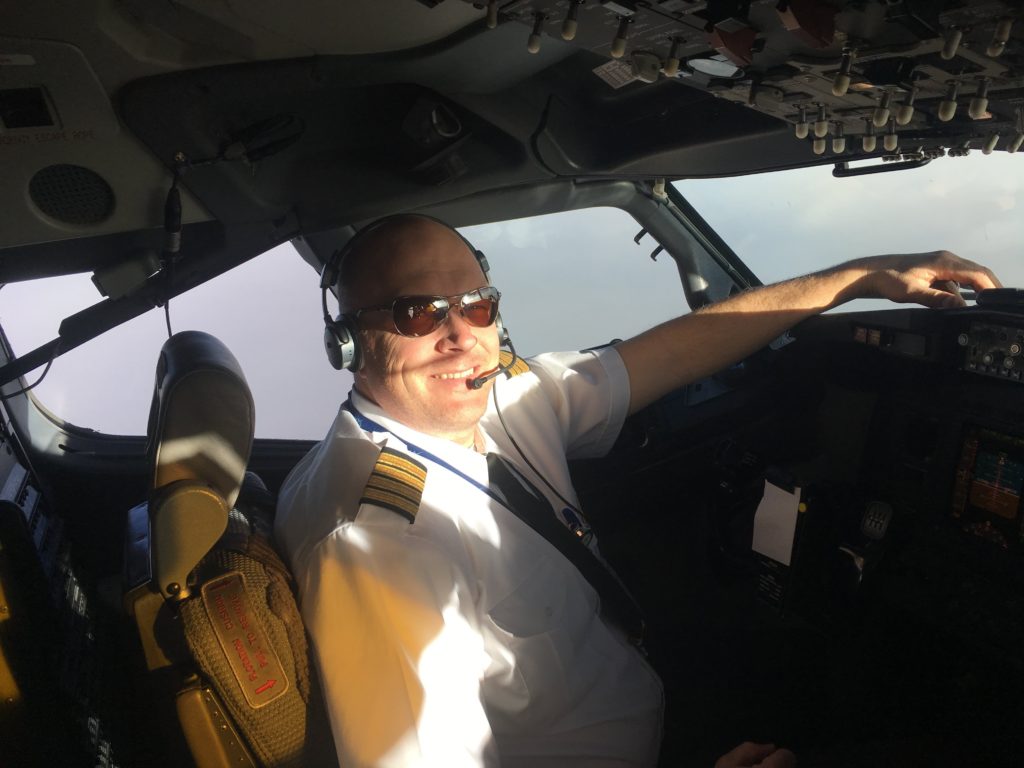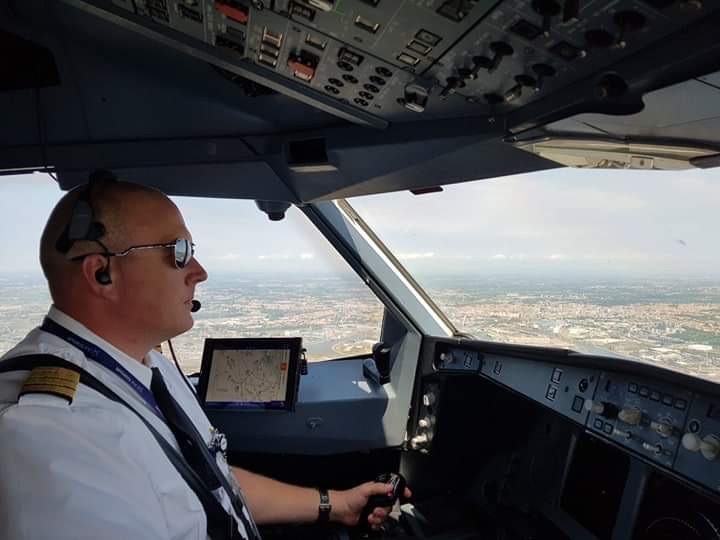Estimated reading time 11 minutes, 30 seconds.
Editor’s note: The following blog post originally appeared on ScudRunners.com and reflects the opinions of the author. Visit the Skies Facebook page to share your thoughts on the Boeing versus Airbus debate!
As the autopilot disconnect horn chirped in the flightdeck, I had to remind myself not to move the sidestick too much in response to the turbulence that was tossing my Airbus A330 around the sky like a cork in a rough sea.

I left the auto thrust on and let the ground speed mini function work its magic while I fought the urge to move the controls back and forth in response to every wing drop, trusting the fly-by-wire system to do its job while I used minor inputs to keep the widebody aircraft on glidepath through 1,000 feet.
The winds weren’t anywhere near the max crosswind of 45 knots, but there were reports of wind sheer on final and the gusty 30-knot crosswind was going to be the strongest I’d encountered in my second month operating the A330.
Just over a year earlier, I had begrudgingly made the transition from my beloved Boeing 737NG to the Airbus A320 aircraft (and eventually to the A330). I had many reasons to be enamoured with the Boeing workhorse: it was my first airline command; I had been an instructor on the aircraft for four years and I knew it inside and out. I enjoyed the schedule and most importantly, it was a joy to fly.
The main difference I discovered very quickly was the flight control system – not just the sidestick but the entire fly-by-wire system and the rationale behind it. In the 737, if I was flying a heavy crosswind like the one mentioned above, I’d be working the yoke back and forth like a champ to keep the wings level. There’s no fly-by-wire computer telling the flight control system to keep the wings in the last attitude commanded by my inputs, as there is on the Airbus.
The Airbus versus Boeing debate is age-old. I’ve heard many a comment about the inferiority of the European design; heck, I’ve even agreed with some of the critiques. Now, as an experienced Airbus training pilot, I still agree with a few. I miss my direct control of the aircraft, the ability to know exactly what the autopilot (or new co-pilot) was doing by just having a few fingers on the yoke. A relaxed hand on the thrust lever allowed me to loosely follow along with the autopilot control inputs while I kept my head outside in busy airspace or on final approach.

It took me about five sim sessions to stop being skeptical of the Airbus, and to start appreciating the positive aspects of the European OEM’s approach to building an airplane. For starters, the flightdeck is a significantly more comfortable workspace, and less cramped. While the sidestick took some getting used to, its location allows for an amazing tray table (no longer eating my meals on my lap like an animal has its perks!) and the ability to move your legs around. It also allows for you to use the quick reference handbook (QRH) much more efficiently, since you can just leave it open to a particular page and not have to stash it on the dash or worry about it falling off your lap while flicking switches. (More on checklist usage below.)
The main difference between the two, as touched on earlier, is the flight control “law” system utilized in the “bus.” In a typical aircraft, if you want to turn left 25 degrees, you turn the control column to the left and apply a slight back pressure to maintain altitude and hold some measure of input to maintain the turn. Not so on the Airbus. Instead, you move the sidestick to the left, with no need to apply backstick until above 30 degrees. Upon reaching 25 degrees angle of bank, you can release the stick and the flight control system will maintain the “requested” angle of bank and pitch attitude.
It is not uncommon for Airbus pilots (especially new ones like me last year) to forget the aircraft is not on autopilot when you can set a heading and attitude and take your hand off the stick and watch the aircraft hold both perfectly. Any deviation (i.e. a wing drop due to turbulence) and the system will counter it automatically to maintain the selected path. Hence my reminder on short final on a windy day not to “fight” the turbulence with opposite control inputs as I would have done on the Boeing, but to let the system do its job.
There are multiple levels of complexity to the flight control system on the bus that would take many more pages to describe (and many more years of flying on my part to fully understand) but a few examples are flare mode, alternate law, soft cruise mode, direct law, alpha protection, etc. Suffice it to say a control system like this is reliant on a complicated network of computers (five flight control computers on the A330 and seven on the A320). Heck, losing both radio altimeters is actually an event in the Airbus, as it will eventually force you into direct law on final (which can at times feel like balancing on the head of a needle control-wise). Meanwhile, the only thing affected on the Boeing in normal operations would be the auto callout system.
One other main difference between Boeing and the Airbus is the way critical information is presented to the pilot. The annunciation system on the 737 would not look out of place on an older-era 727 or even 707. When a system failure not directly in line of sight of the pilot (i.e. on the overhead panel) is triggered, a master caution annunciation illuminated on the glare shield directs the pilot’s attention to a small illuminated annunciation telling them where to look on the overhead panel. As an added bonus, only systems directly above the pilot or co-pilot are displayed on their respective annunciator, so as a captain if there is an issue with the pressurization system it will be highlighted on the first officer’s annunciator. You then look up to see which specific system is malfunctioning by the presence of an amber light on the overhead panel; for example, a GEN 1 fault. This may sound straightforward in theory (and I believed it so for the five years I operated the 737) but time is wasted determining the fault and it can be open to mis-identification as well.
A typical illuminated fault procedure looks something like this:
*Master caution illuminates on the glareshield*
Pilot 1 – “Master caution, what’s the problem?”
Pilot 2 – Reads the annunciator panel – notes ELEC illuminated “master caution electrical.”
Pilot 2 – Looks overhead “GEN 2 FAULT” – “Master caution reset”
Pilot 1 – “GEN 2 fault non-normal checklist.”
Now, let’s juxtapose this with a fault on the A330 or A321 (the systems are identical). The ECAM, or Electronic Centralized Aircraft Monitor system, presents the pilot with a single screen denoting the fault, rectification and relevant systems affected and CAT 2/3 approach status. All in one.

Lose that same generator and you’ll get a chime directing you to the ECAM; there, “GEN 1” fault will be displayed along with the checklist and items will disappear from the screen as they are accomplished. If you can reset the system via ECAM, then the relevant systems affected are also displayed under a “status page.” This greatly streamlines identifying and correcting system malfunctions.
Newer Boeing designs have their own version of the ECAM system, which I cannot comment on as I have only flown the 737.
There are a myriad of differences between the two types that a single article could not cover, and I’d say both have their strength and weaknesses. One thing I really appreciated was the ease of transitioning to the A330 from the A321; the flightdecks are so similar that unless you are specifically trained on one or the other, you wouldn’t be able to tell the difference if you were blindfolded and dropped into either one.
There are some systems differences, mainly with hydraulics and electrical, but otherwise the procedures, memory items, ECAM operation, and flight control law are all nearly identical. And, while hand-flying the Airbus can feel a lot more like asking a computer to do it for you, the ease of operation allows one to manage the aircraft better, with better situational awareness.
I realize that my experience may be different from yours and my opinions here can be subjective; however, I have enjoyed operating both types.
In the end, whenever I get asked the age-old question, “Which do you prefer?”, my typical answer is, “I miss flying the Boeing, but I prefer operating the Airbus.”
Steve Zago currently flies the Airbus A330 for Air Transat and is based in Toronto.
Pilots, what do you think? Visit the Skies Facebook page to share your thoughts on the age-old Boeing versus Airbus debate!









Great Read, Well done Steve! Congrats.
Thank you so much, Steve: I am a total aviation enthusiast flying model planes (and C-172’s in the past) and your description of the difference in flying Boeing or Airbus is highly interesting and detailed.
I did not know that the airbus will do a turn up to 25° without pulling a bit for up elevator, or that you can mostly let it fly thru turbulence.
The biggest difference though is of course that with sidesticks you can not feel what your co-pilot is moving and this has led to some accidents by poorly trained crews.
Btw I found this nice website just now as I was checking on the Twin Otter rescue, I am infected with the DeHavilland virus especially as I have worked there on the Dash 7 when I was living in Canada.
I have several Beaver models of course, and this year my 2 m wingspan Twin Otter in RCAF colours # 13805 had it’s first flights (electric powered and many scale details) .
Thanks again and I wish you many happy hours flying the Air Transat A 330 :^)
“Herb &thebirds”